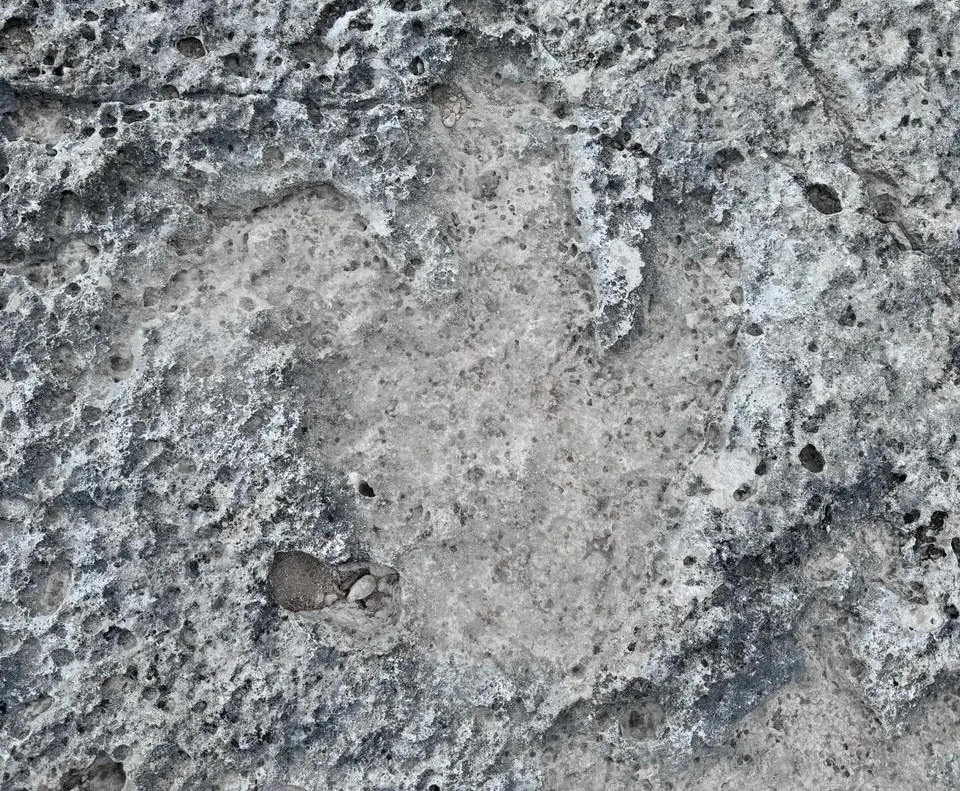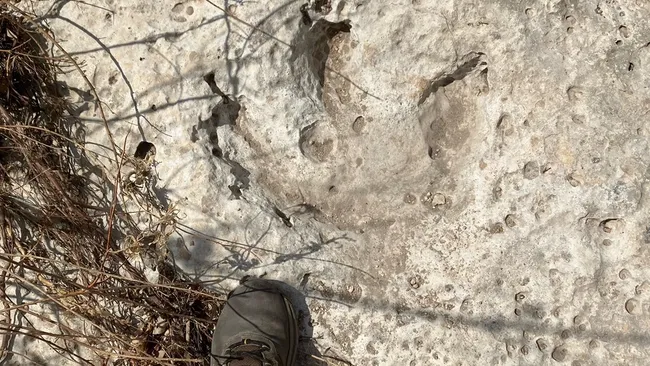While clearing debris from the devastating floods in Texas in July, volunteers uncovered 15 large dinosaur footprints thought to belong to a formidable prehistoric predator.
Recent flooding in Texas has uncovered 15 well-preserved dinosaur footprints dating back around 115 million years, paleontologists have confirmed.
The discovery was made in northwest Travis County in July, as volunteers cleared debris left behind by severe flooding. Travis County Judge Andy Brown said the large, three-toed prints — each measuring roughly 18 to 20 inches (46 to 51 centimeters) — were quickly flagged for expert review. Paleontologist Matthew Brown, director of vertebrate paleontology at the University of Texas at Austin, verified the find on Aug. 5.

“These tracks were made by meat-eating dinosaurs similar to Acrocanthosaurus — a predator about 35 feet (11 meters) long that dominated North America during the Early Cretaceous,” Brown told CNN. The Acrocanthosaurus lived between 115 and 105 million years ago and, while similar in length to the later Tyrannosaurus rex, was slimmer and less massive.
The prints, arranged in a crisscross pattern, suggest that more than one dinosaur may have been moving through the area at the same time. Brown and his team plan to return to the site to document the tracks in greater detail, using modern tools such as drones and 3D surface scanning to create precise models. These models could reveal new insights into the animals’ movement, anatomy, and social behavior.
The tracks were found in the Glen Rose Formation, a geologic layer about 110 million years old. This rock unit is well known for preserving dinosaur footprints, and similar finds have been documented in the area before. Sandy Creek, where the prints emerged, lies about 200 miles south of Dinosaur Valley State Park, one of Texas’s most famous fossil sites.
“Fossilized footprints are relatively common in Travis County,” Brown said, noting that University of Texas researchers have studied tracks here since the early 1990s. “But each new exposure — especially after a historic flood — offers us fresh opportunities to learn about the dinosaurs that once roamed this region.”
During the Cretaceous period, much of Texas was covered by a shallow sea and muddy floodplains — ideal conditions for preserving the footsteps of giants.
